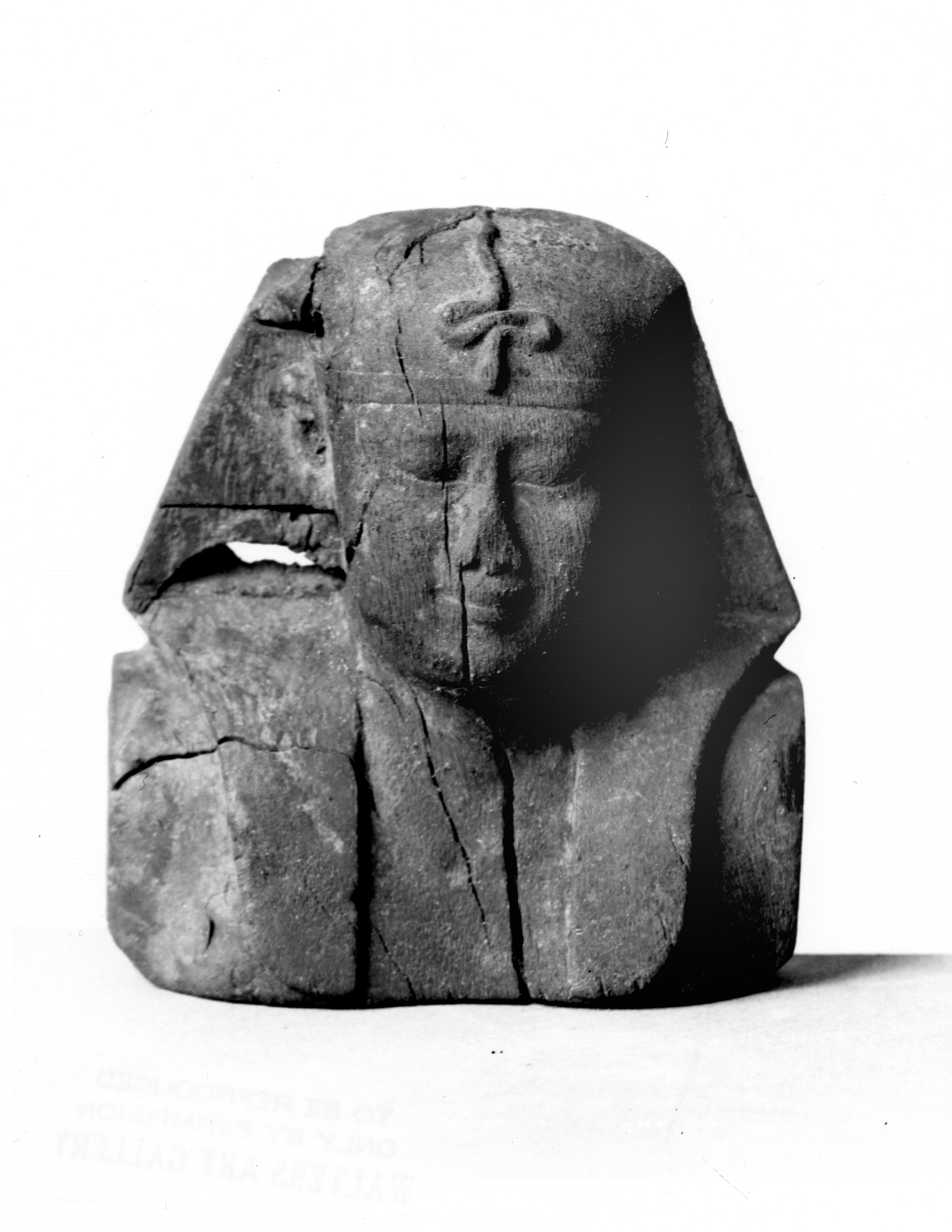Royal Bust
This wooden model represents a Ptolemaic pharaoh, one of the Greek kings who ruled Egypt after the death of Alexander the Great. He wears the royal nemes headdress with a serpent. Though it is not the normal royal cobra-the uraeus-as its head hangs down on the king's forehead instead of being raised, it may still be intended to symbolize magical protection of the king.
Provenance
Provenance (from the French provenir, 'to come from/forth') is the chronology of the ownership, custody, or location of a historical object. Learn more about provenance at the Walters.
Dikran Kelekian, New York and Paris [date and mode of acquisition unknown]; Henry Walters, Baltimore, 1925, by purchase; Walters Art Museum, 1931, by bequest.
Exhibitions
| 2004-2005 | Carved for Immortality. The Walters Art Museum, Baltimore. |
Conservation
| Date | Description | Narrative |
|---|---|---|
| Examination | exhibition | |
| 7/20/1972 | Treatment | repaired; cleaned |
Geographies
Egypt, Delta (Place of Origin)
Measurements
H: 4 5/8 in. (11.8 cm)
Credit Line
Acquired by Henry Walters, 1925
Location in Museum
Not on view
Accession Number
In libraries, galleries, museums, and archives, an accession number is a unique identifier assigned to each object in the collection.
In libraries, galleries, museums, and archives, an accession number is a unique identifier assigned to each object in the collection.
22.249




